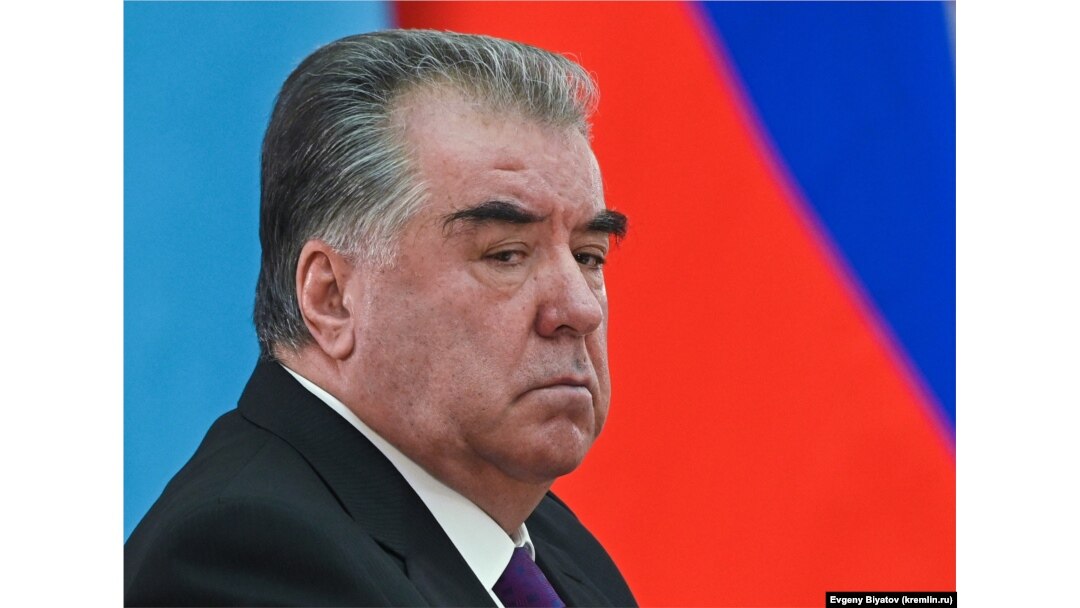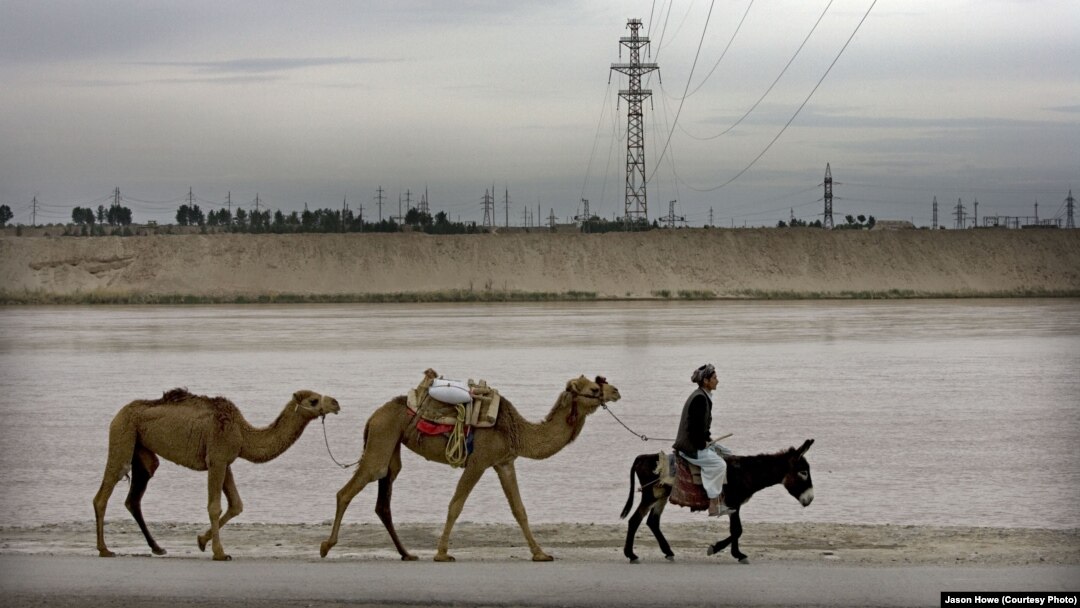The first two weeks of this year have brought a reminder that Central Asia’s relationship with the Taliban authorities in Afghanistan are far from smooth and could potentially turn bad very quickly.
The Tajik government does not communicate directly with the Taliban and made clear in August when the militants captured Kabul that until the Afghan government is “inclusive” -- meaning the large ethnic Tajik population is represented in government -- Dushanbe will not consider recognizing the Taliban as Afghanistan's legitimate government.
That's one reason the Tajik border has been the tensest section of Afghanistan’s northern frontiers, as Dushanbe continues to say there are militants in northeastern Afghanistan that are a threat to Tajikistan.
At a Collective Security Treaty Organization (CSTO) summit on January 10, Tajik President Emomali Rahmon said: “According to the Tajik intelligence services, the number of camps and training centers for terrorists bordering the southern borders of the CSTO in the northeastern provinces of Afghanistan totals more than 40, and their numerical strength is more than 6,000 militants.”

Tajik President Emomali Rahmon
Rahmon also told the leaders of Russia, Belarus, Armenia, Kazakhstan, and the head of Kyrgyzstan’s cabinet of ministers taking part in the summit that "You and I know very well that since the second half of August 2021, thousands of members of [Islamic State], Al-Qaeda, [Jamaat] Ansarullah, Hizb ut-Tahrir, and other terrorist groups have been released from prisons in Afghanistan."
Ansarullah is comprised mainly of Tajik citizens who have been fighting alongside the Taliban for years.
The Taliban reportedly deployed some of the Ansarullah fighters to guard the border with Tajikistan, prompting Dushanbe to further strengthen its forces along the Afghan border.
As for Rahmon’s latest claims of training camps and thousands of militants in northeastern Afghanistan, Bilal Karimi, the deputy spokesman for the Taliban, said, “There is no such training center in any part of the country in which insurgents are being trained."
Return Our Aircraft
The Taliban also had a complaint of its own against Tajikistan and Uzbekistan.
Mawlawi Mohammad Yaqoob, the son of Taliban founder Mullah Omar and currently the militant group’s defense minister, said on January 11 that the Taliban want the warplanes and helicopters in Tajikistan and Uzbekistan that escaping Afghan government forces flew to those two countries as the Taliban were moving on Kabul to be returned to the Taliban.
Information from just before the Taliban took control of most of Afghanistan showed 46 or 47 Afghan warplanes and helicopters landed in the Uzbek border town of Termez, and two passenger and 16 military aircraft had flown to Tajikistan, though Tajik officials said only three Afghan planes and two helicopters were on its territory.
SEE ALSO: Turmoil In Afghanistan Spills Into Central AsiaA subsequent report suggested some of the helicopters have already been moved to the U.S. Air Force’s “bone yard,” a huge parking lot for mothballed aircraft in the state of Arizona.
“Our planes that you have, that are in Tajikistan and Uzbekistan, must be returned to us,” Yaqoob said.
Yaqoob also warned Tajikistan and Uzbekistan “not to test our patience and not to force us to take possible retaliatory steps to [reclaim the aircraft].”
Taliban Defense Minister Mohammad Yaqoob (file photo)
Tashkent Playing Nice
Such talk has been going back and forth between Tajik authorities and the Taliban for months, but Uzbekistan has taken an entirely different and more amiable position toward the Taliban.
Since the Taliban seizure of power, Tashkent has worked to keep cargo, including humanitarian aid, moving across the Uzbek-Afghan border and officials from the two sides -- from local leaders to foreign ministers -- have met to discuss issues of common interest.
Tajikistan, Turkmenistan, and Uzbekistan have been supplying electricity to Afghanistan for years as part of deals reached with the Afghan government of 2001-2021.
All three have said they would continue sending electricity to Afghanistan even though the Taliban admits it cannot pay for it now.
But Afghan state power company Da Afghanistan Breshna Sherkat said in a statement on January 12 that Uzbekistan had reduced electricity exports to Afghanistan by 60 percent and that 16 Afghan provinces are facing shortages.
Uzbek officials reportedly pointed to a technical problem at a substation as the reason for the reduction and said the electricity should return to its regular flow in two or three days. But Da Afghanistan Breshna Sherkat said on January 13 that full power had already been restored.
Turkmen Beware?
And recently a video was posted of Taliban fighters near Turkmenistan’s border showing off a Turkmen Army military belt they say was left behind by a Turkmen soldier who crossed into Afghanistan.
One Taliban fighter said in Turkmen that the soldier had crossed the border with others to steal near the village of Qarqeen, in Afghanistan’s Jowzjan Province, which borders Turkmenistan’s Mary Province.
But when they saw Taliban fighters in the area, the Taliban soldier claims, the intruders ran away and one dropped his belt.
The Taliban fighter warns that neither he nor his associates will have sympathy for anyone who covets land or property in Afghanistan.
This comes just a little more than a week since the Taliban said Turkmen border guards shot dead an Afghan citizen, and days later fired on Taliban fighters who came to investigate in the Khamyab district, to the west of Qarqeen in the Jowzjan Province.
SEE ALSO: First Firefight: Turkmen, Taliban Engage In Border Shoot-OutThat exchange of fire reportedly lasted several hours, with Taliban fighters firing rockets at the Turkmen border guards. There were no reports of casualties.
Though it is quite likely that none of the governments in Central Asia wanted to see the Taliban return to power, that is now the reality. The first days of 2022 are another reminder to the Central Asian states bordering Afghanistan that they are dealing with a militant group, not politicians.


